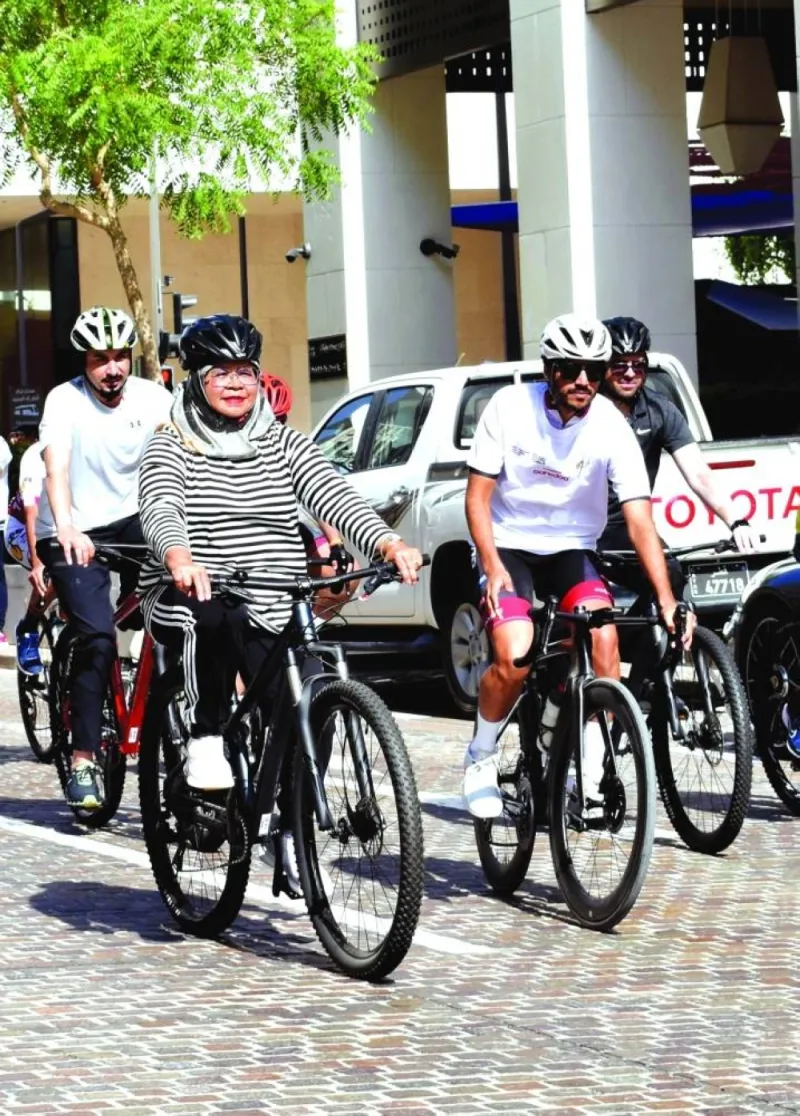The FIFA World Cup – football in particular – can play a key role in raising awareness on the importance of achieving the UN sustainable development goals (SDGs), UN-Habitat executive director Maimunah Mohd Sharif has said. “Local action is at the heart of sustainable development. This is what we mean when we talk about SDG localisation. Local and city governments must work side by side with national governments to achieve the SDGs by 2030.
“I hope this message will be loud and clear and that football fans can bring it home to their countries,” she said.
Sharif took part in a cycling tour at Msheireb Downtown Doha on Tuesday, held on the sidelines of the tournament, as part of an environmental initiative titled “Cycle to Recycle”. In partnership with Education Above All, it aims to create a movement that encourage alternative ways in promoting more sustainable cities.
She said that millions of football fans can learn more and help in achieving the SDGs by 2030. According to UN-Habitat, the 2030 Agenda for Sustainable Development includes a dedicated Goal on cities, SDG 11 – to make cities inclusive, safe, resilient and sustainable.
Sharif cited Msheireb, which was designed and built as a compact and walkable neighbourhood, as an example of urban regeneration: its walkways, piazzas and arcades encourage people to walk and has a sustainable transport system with the Msheireb Tram connecting directly to the metro. She noted that many buildings are LEED-certified and Msheireb serves as an example of sustainable resource management and adoption of the 3R approach – Reduce, Reuse, Recycle.
“As I always like to do things my way, I can add a fourth R - Rethink. We should re-think how we plan and manage our communities. SDG 11 (make cities inclusive, safe, resilient and sustainable) is not a goal that stands on itself. It is strongly linked with other SDGs.
“If we plan and manage our cities sustainably, we help them to develop economically and reduce poverty and hunger, as stated in SDG1 (no poverty) and SDG 2 (zero hunger).
“We can achieve better health outcomes – SDG3. We can spend more on public services, education, and infrastructure – Goal 6. We can improve water and sanitation—Goal 6. And we can have better energy – Goal 7. To achieve our goals, we need to make our cities resilient,” Sharif said.
She underlined the importance of having more public spaces, which means more football fields for children to raise future super stars. However, she noted that public spaces in cities not only provide space for physical exercise but also help build better communities. “City governments who invest in public infrastructure get a positive return on their investment by reducing healthcare costs or enhancing productivity,” Sharif added.

Maimunah Sharif takes part in a cycling tour at Msheireb Downtown Doha on Tuesday. PICTURE: Thajudheen



